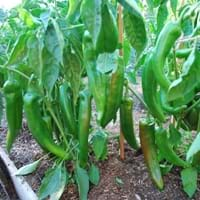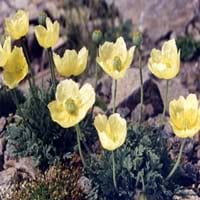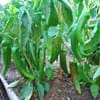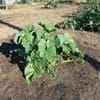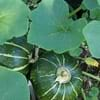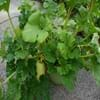Life Span
Perennial
Perennial
Origin
Mexico, Central America, South America
Russia/Siberia, Japan
Types
Capsicum baccatum
Capsicum chinense
Capsicum eximium
Capsicum frutescens
Capsicum pubescens
Not Available
Number of Varieties
Not Available
Habitat
Hillside, Lower slopes, shaded fields, Well Drained
Alpine Meadows, Rocky areas
USDA Hardiness Zone
10-11
5-7
Sunset Zone
A1, A2, A3, H1, H2, 1a, 1b, 2a, 2b, 3a, 3b, 4, 5, 6, 7, 8, 9, 10, 11, 12, 13, 14, 15, 16, 17, 18, 19, 20, 21, 22, 23, 24
3a, 3b, 4, 5, 6, 7, 8, 9, 14, 15, 16, 17
Habit
Upright/Erect
Clump-Forming
Flower Color
White, Ivory
Light Yellow, Yellow green
Flower Color Modifier
Bicolor
Bicolor
Fruit Color
Red, Green
Not Available
Leaf Color in Spring
Dark Green, Green
Gray Green
Leaf Color in Summer
Green, Dark Green
Gray Green
Leaf Color in Fall
Green, Dark Green, Black
Gray Green
Leaf Color in Winter
Green, Dark Green
Not Available
Leaf Shape
Acuminate
Lobed
Plant Season
Spring, Summer, Fall
Summer
Sunlight
Full Sun
Full Sun, Partial Sun
The pH of Soil
Neutral
Acidic, Neutral, Alkaline
Soil Drainage
Well drained
Well drained
Bloom Time
Spring, Summer, Indeterminate
Early Summer, Summer
Tolerances
Drought
Drought
Where to Plant?
Ground
Ground
How to Plant?
Seedlings
Seedlings
Plant Maintenance
Medium
Medium
Watering Requirements
Water frequently while growing
Average Water Needs, Never Over-water
In Summer
Lots of watering
Lots of watering
In Spring
Moderate
Moderate
In Winter
Average Water
Average Water
Soil pH
Neutral
Acidic, Neutral, Alkaline
Soil Drainage Capacity
Well drained
Well drained
Sun Exposure
Full Sun
Full Sun, Partial Sun
Pruning
Remove damaged leaves, Remove dead branches, Remove dead leaves
Cut or pinch the stems, Remove damaged leaves, Remove dead branches, Remove dead leaves
Fertilizers
All-Purpose Liquid Fertilizer, Apply N-P-K
All-Purpose Liquid Fertilizer, as it is a flowering plant, use high phosphorous content fertilizer, Water soluble fertilizers
Pests and Diseases
Aphids, Bacterial leaf spot, Beet armyworm, Damping-off, Flea Beetles, Fusarium wilt, Red blotch
Not Available, Red blotch
Plant Tolerance
Drought
Drought
Flowers
Insignificant
Showy
Flower Petal Number
Single
Single
Foliage Texture
Medium
Fine
Foliage Sheen
Glossy
Matte
Attracts
Aphids, Beet armyworms, Flea beetles
Not Available
Allergy
contact allergic dermatitis, Rhinitis
Not Available
Aesthetic Uses
Bog Garden, Borders
Beautification, Showy Purposes
Beauty Benefits
Not Available
Not Available
Environmental Uses
Air purification
Air purification
Medicinal Uses
Antirheumatic, Appetizer, Intestinal irritations
Not Available
Part of Plant Used
Flowers, Fruits
Not Available
Other Uses
Not Available
Not Available
Used As Indoor Plant
No
Yes
Used As Outdoor Plant
Yes
Yes
Garden Design
Container, Edible, Herb / Vegetable, Mixed Border, Tropical
Alpine, Edging, Mixed Border, Rock Garden / Wall
Botanical Name
CAPSICUM annuum 'Big Chile'( Longum Group)
PAPAVER miyabeanum
Common Name
Big Chile Pepper, Chile Pepper
Japanese Poppy
In Hindi
Chile Pepper
Japanese Poppy
In German
Chile-Pfeffer
japanische Poppy
In French
Chili Pepper
Poppy japonaise
In Spanish
La pimienta de Chile
amapola japonesa
In Greek
Χιλή πιπέρι
Ιαπωνικά παπαρούνας
In Portuguese
pimenta do Chile
Poppy japonês
In Polish
Chile Pepper
japoński Poppy
In Latin
Chile Pepper
Papaver Italica
Phylum
Tracheophyta
Tracheophyta
Class
Magnoliopsida
Magnoliopsida
Order
Solanales
Ranunculales
Family
Solanaceae
Papaveraceae
Clade
Asterids, Eudicots
Angiosperms, Eudicots
Tribe
Not Available
Papaver
Subfamily
Not Available
Paperveroideae
Number of Species
Not Available
Importance of Chile Pepper and Japanese Poppy
Want to have the most appropriate plant for your garden? You might want to know the importance of Chile Pepper and Japanese Poppy. Basically, these two plants vary in many aspects. Compare Chile Pepper and Japanese Poppy as they differ in many characteristics such as their life, care, benefits, facts, etc. Every gardener must at least have the slightest clue about the plants he wants to plant in his garden. Compare their benefits, which differ in many ways like facts and uses. The medicinal use of Chile Pepper is Antirheumatic, Appetizer and Intestinal irritations whereas of Japanese Poppy is Not Available. Chile Pepper has beauty benefits as follows: Not Available while Japanese Poppy has beauty benefits as follows: Not Available.
Compare Facts of Chile Pepper vs Japanese Poppy
How to choose the best garden plant for your garden depending upon its facts? Here garden plant comparison will help you to solve this query. Compare the facts of Chile Pepper vs Japanese Poppy and know which one to choose. As garden plants have benefits and other uses, allergy is also a major drawback of plants for some people. Allergic reactions of Chile Pepper are contact allergic dermatitis and Rhinitis whereas of Japanese Poppy have Not Available respectively. Having a fruit bearing plant in your garden can be a plus point of your garden. Chile Pepper has showy fruits and Japanese Poppy has no showy fruits. Also Chile Pepper is not flowering and Japanese Poppy is not flowering . You can compare Chile Pepper and Japanese Poppy facts and facts of other plants too.
